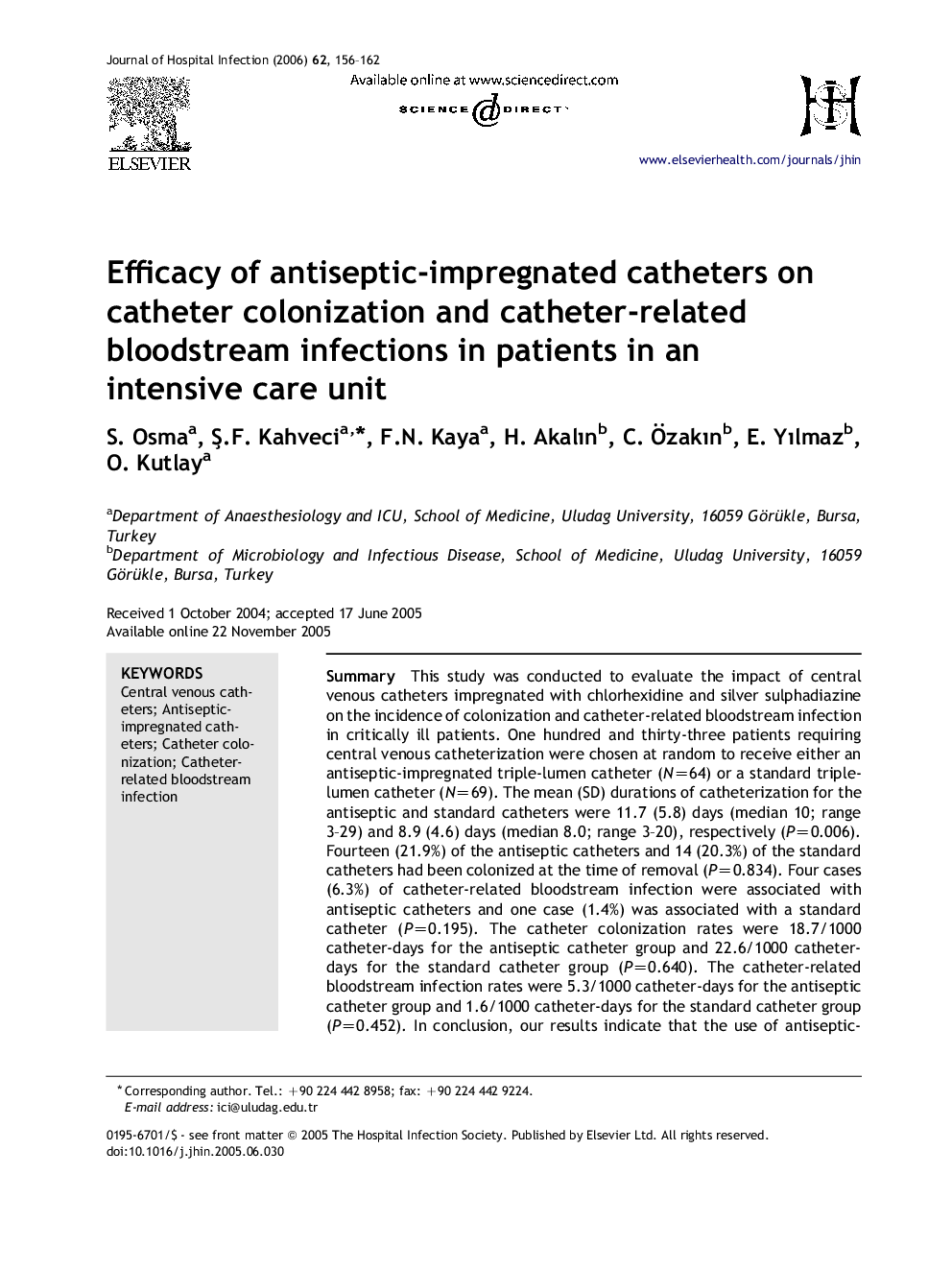| Article ID | Journal | Published Year | Pages | File Type |
|---|---|---|---|---|
| 3374292 | Journal of Hospital Infection | 2006 | 7 Pages |
SummaryThis study was conducted to evaluate the impact of central venous catheters impregnated with chlorhexidine and silver sulphadiazine on the incidence of colonization and catheter-related bloodstream infection in critically ill patients. One hundred and thirty-three patients requiring central venous catheterization were chosen at random to receive either an antiseptic-impregnated triple-lumen catheter (N=64) or a standard triple-lumen catheter (N=69). The mean (SD) durations of catheterization for the antiseptic and standard catheters were 11.7 (5.8) days (median 10; range 3–29) and 8.9 (4.6) days (median 8.0; range 3–20), respectively (P=0.006). Fourteen (21.9%) of the antiseptic catheters and 14 (20.3%) of the standard catheters had been colonized at the time of removal (P=0.834). Four cases (6.3%) of catheter-related bloodstream infection were associated with antiseptic catheters and one case (1.4%) was associated with a standard catheter (P=0.195). The catheter colonization rates were 18.7/1000 catheter-days for the antiseptic catheter group and 22.6/1000 catheter-days for the standard catheter group (P=0.640). The catheter-related bloodstream infection rates were 5.3/1000 catheter-days for the antiseptic catheter group and 1.6/1000 catheter-days for the standard catheter group (P=0.452). In conclusion, our results indicate that the use of antiseptic-impregnated central venous catheters has no effect on the incidence of either catheter colonization or catheter-related bloodstream infection in critically ill patients.
